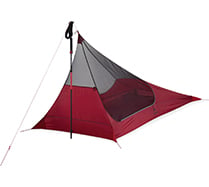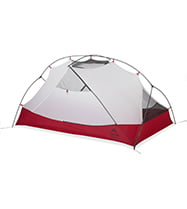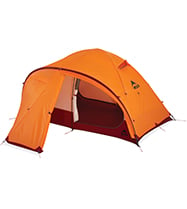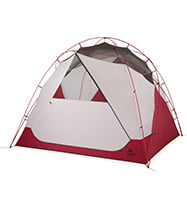The Ultimate Guide to MSR Tents
Whether you’re climbing the biggest peaks on earth or planning a campout with the family, MSR® has the perfect tent for you. MSR tents are built on a foundation of reliability and condition-specific design, delivering just what you need for any adventure.
However, with so many specialized tents to choose from, picking the right one can seem daunting. In reality, finding the right tent is pretty straightforward when you have the right information and a basic understanding of what makes each tent tick. Thus, we present the Ultimate Tent Guide as a beacon to light your way through it all.
Below, you’ll find all of our tent offerings laid out by category. This is your first step in locating the right tent for your needs. Once you’re in the right ballpark, there’s a quick overview of each tent model within that category and the design ethos behind them. With that information, you should be able to zero in on a few MSR tents in the accompanying comparison chart. Then check out the individual product pages to make sure you’ve found the best tent for your kind of adventure.
Jump ahead to:
1. Frontcountry/Camping Tents
2. Backpacking Tents
3. Bikepacking Tents
4. All-Season Tents
5. Minimalist Tents & Shelters
6. About MSR Tents
7. How to Find the Right Tent for You
8. Staying Warm & Dry in a Tent
9. How to Pack Your Tent
10. Tent Care
11. Tent Accessories
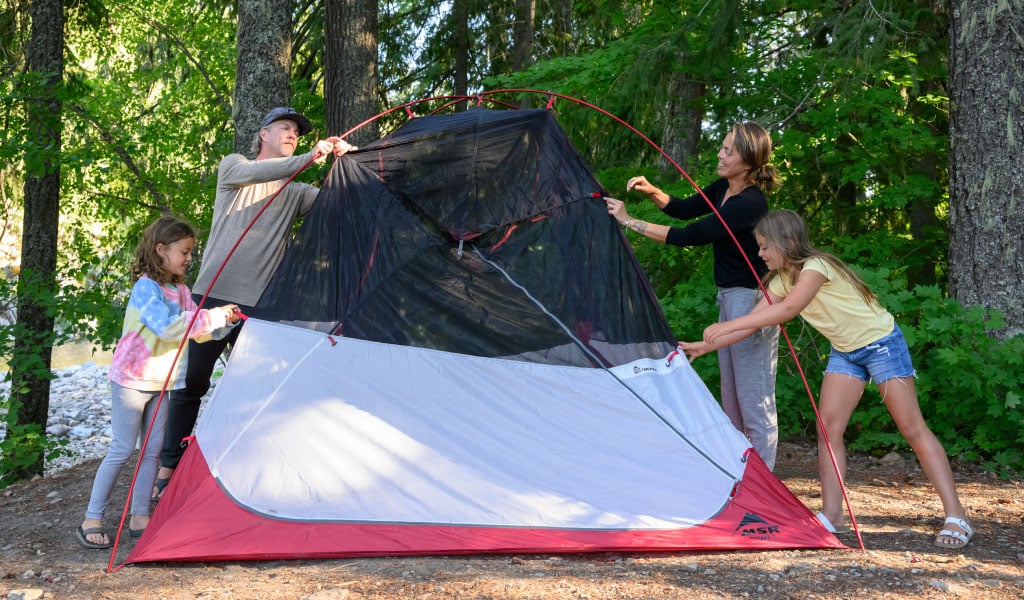
MSR Frontcountry/Camping Tents
Some of our newest additions, our Frontcountry/Camping tents were built because we dreamed of having large, standing-height shelters for group activities that weren’t essentially disposable one storm/one season solutions. We knew there was a way to take the same high standards we have for our backcountry tents and design them into a family camping tent worthy of the MSR name.
| Camping Tent | Min Weight | Floor Area + Vestibule(s) | Door/Vestibules | Sleeps | Best Uses/Key Features |
|---|---|---|---|---|---|
| Habitude™ 4 | 12 lb (5.44kg) |
62.5 + 23.5 sq. ft
(5.8 + 2.18 sq. m) |
1 | 4 | Robust Group, Family and Car Camping; Frontcountry size with backcountry quality. |
| Habitude™ 6 | 13 lb 6-oz. (6.08 kg) |
83 + 24.5 sq. ft
(7.71 + 2.27 sq. m) |
1 | 6 | Robust Group, Family and Car Camping; Frontcountry size with backcountry quality. |
| Habiscape™ 4 | 11 lb 4-oz. (5,4kg) |
62 + 23.5 sq. ft
(7.71 + 2.27 sq. m) |
2/1 | 4 | Generalist Frontcountry Group; Family and car camping with 2 doors. |
| Habiscape™ 6 | 13 lb 9-oz. (6.08kg) |
83 + 24.5 sq. ft
(7.71 + 2.27 sq. m) |
2/1 | 6 | Generalist Frontcountry Group; Family and car camping with 2 doors. |
| Habiscape Lounge™ 4 | 13.8 lb (6.11kg) |
62.5 + 36 sq. ft
(5.8 + 3.34 sq. m) |
2/1 | 4 | Generalist Frontcountry Group; Family and car camping; 2 doors + awning. |
| Habiscape Lounge™ 6 | 15 lb 3-oz. (6.89kg) |
83 + 36 sq. ft
(7.71 + 3.34 sq. m) |
2/1 | 6 | Generalist Frontcountry Group; Family and car camping; 2 doors + awning. |

Habitude™ 4, 6
Habitude tents are built tough to handle the relentless abuse handed out on anything from family camping to summer-long road trips. Key features on the Habitude 4 and Habitude 6 tents include cavernous interiors, burly fabrics and components plus a fast, easy setup. They’re everything you want when you literally roll into camp, whether you’re a seasoned veteran or a brand-new camper. The stable, 7000-series aluminum pole geometry creates roomy interior spaces with 73 (4P) and 77-inch (6P) standing heights that add essential ease to any vehicle-based adventure. Additional touches are an integrated porch light, tons of internal storage, a giant vestibule and multiple hang points to make it feel like home. We also eliminated all zipper curves on doors for ease of use and vastly improved durability.

Habiscape™ 4, 6/Habiscape™ Lounge 4.6
If the Habitude is for the die-hard backcountry lifers who now have kids and demand legit storm performance and durability, the Habiscape tents are a happy medium for new campers and anyone that demands quality but isn’t regularly using their tent for weeks on end. They’re built of slightly lighter weight components and instead, lean towards a bit more luxury with two doors and cool features like Pass-thru Pockets for grabbing those car keys without having to unzip any doors. The ‘Lounge’ version takes things a step further with an oversized front vestibule that’s more like a porch. It can be rolled up out of the way completely, or propped up with two MSR Adjustable Poles (sold separately) for covered seating in sun and rain.
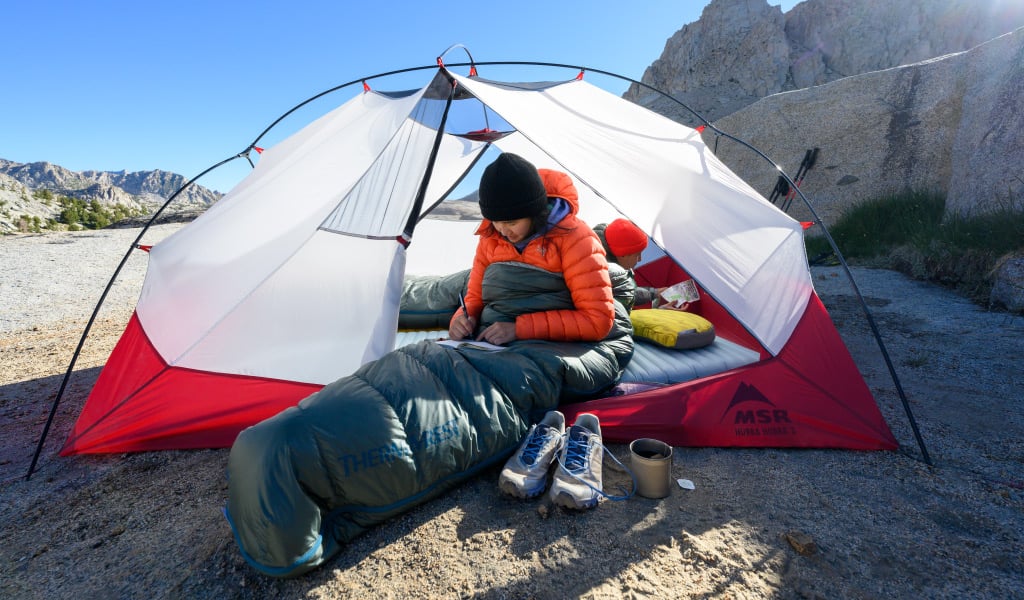
Backpacking Tents
Looking for one tent you can take on a five-night backpack and go car camping with? Or maybe a more specialized one for a thru-hike, canoe trip or a long gravel grind? Our backpacking tents span it all, providing reliable, full-coverage and portable protection in a spectrum of configurations that cover the vast majority of demands on trips from spring through fall.
| Backpacking Tent | Min Weight | Floor Area + Vestibule(s) | Door/Vestibules | Sleeps | Best Uses/Key Features |
|---|---|---|---|---|---|
| FreeLite™ 1 | 1 lb 10-oz. (.74kg) |
20 + 8 sq. ft
(1.85 + .74 sq. m) |
1 | 1 | Ultralight summer backpacking tent with maximum ventilation and a bit more space. |
| FreeLite™ 2 | 2 lb (.91kg) |
29 + 15 sq. ft
(2.7 + 1.4 sq. m) |
2 | 2 | Ultralight summer backpacking tent with maximum ventilation and a bit more space. |
| FreeLite™ 3 | 2 lb 6-oz. (1.07kg) |
38.5 + 15.5 sq. ft
(3.57 + 1.4 sq. m) |
2 | 3 | Ultralight summer backpacking tent with maximum ventilation and a bit more space. |
| Hubba Hubba™ 1 | 2 lb 2-oz. (.95kg) |
18 + 7.5 sq. ft
(1.67 + .70 sq. m) |
1/1 | 1 | The legendary all-rounder. Everything from ultralight backpacks to float trips and car camping. |
| Hubba Hubba™ 2 | 2 lb 14-oz. (1.30kg) |
29 + 15 sq. ft
(2.69 + 1.40 sq. m) |
2/2 | 2 | The legendary all-rounder. Everything from ultralight backpacks to float trips and car camping. |
| Hubba Hubba™ 3 | 3 lb 7-oz. (1.55kg) |
39.5 + 15 sq. ft
(3.67 + 1.40 sq. m) |
2/2 | 3 | The legendary all-rounder. Everything from ultralight backpacks to float trips and car camping. |
| Elixir™ 1 | 3 lb 15-oz. (1.78kg) |
20 + 12 sq. ft
(1.86 + 1.11 sq. m) |
2/2 | 2 | More space for added comfort with more fabric in the tent body for added privacy and weather protection for the shoulder season. |
| Elixir™ 2 | 5 lb (2.24kg) |
29 + 24 sq. ft
(2.69 + 2.22 sq. m) |
2/2 | 3 | More space for added comfort with more fabric in the tent body for added privacy and weather protection for the shoulder season. |
| Elixir™ 3 | 5 lb 14-oz. (2.66kg) |
39.5 + 24 sq. ft
(3.67 + 2.22 sq. m) |
2/2 | 3 | More space for added comfort with more fabric in the tent body for added privacy and weather protection for the shoulder season. |
| Elixir™ 4 | 7 lb 15-oz. (3.60kg) |
54 + 24.5 sq. ft
(5.02 + 2.27 sq. m) |
2/2 | 4 | More space for added comfort with more fabric in the tent body for added privacy and weather protection for the shoulder season. |

FreeLite™ 1, 2, 3
If you like the idea of a small, ultralight tent, check out the still-ultralight, semi-freestanding FreeLite tents. Composite Easton® Syclone™ poles and slightly tougher fabrics add durability while still keeping things ultralight. The FreeLite tents also feature extra room inside, plus added vestibule space so you can make the most of it when waiting out a summer storm or escaping a cloud of mosquitoes.

Hubba Hubba™ 1, 2, 3
If you have room for just one tent in your busy life (or condo), and you like to do it all, the Hubba Hubba should be at the top of your list. Our Hubba Series of MSR tents are legendary for their all-around performance, taking on everything from high-mileage backpacks to car camping adventures. They feature the added versatility of a fabric canopy for more privacy and added warmth in shoulder-season conditions, a setup-friendly, freestanding design and tougher fabrics that will handle the frequent use typical for a tent so versatile. If you love this tent and need even more room, add a Gear Shed for a giant boost in covered space for added gear.

Elixir™ 1, 2, 3, 4
Are shorter backpacks with more creature comforts your thing? Maybe you’d rather sacrifice some weight savings for the added durability and space needed for spending a lot of time in your tent. The Elixir tents deliver just that with a little more of everything: space, protection and durability. The Elixirs are built the reliable 70D nylon floors, while a fabric canopy adds warmth and privacy with just enough mesh for great ventilation and visibility when not using the rainfly. Just like the Hubba Hubba tents, the Gear Shed works with the Elixir 1, 2 and 3 tents, adding nearly 27 square feet of added vestibule coverage for gear, bikes and more.
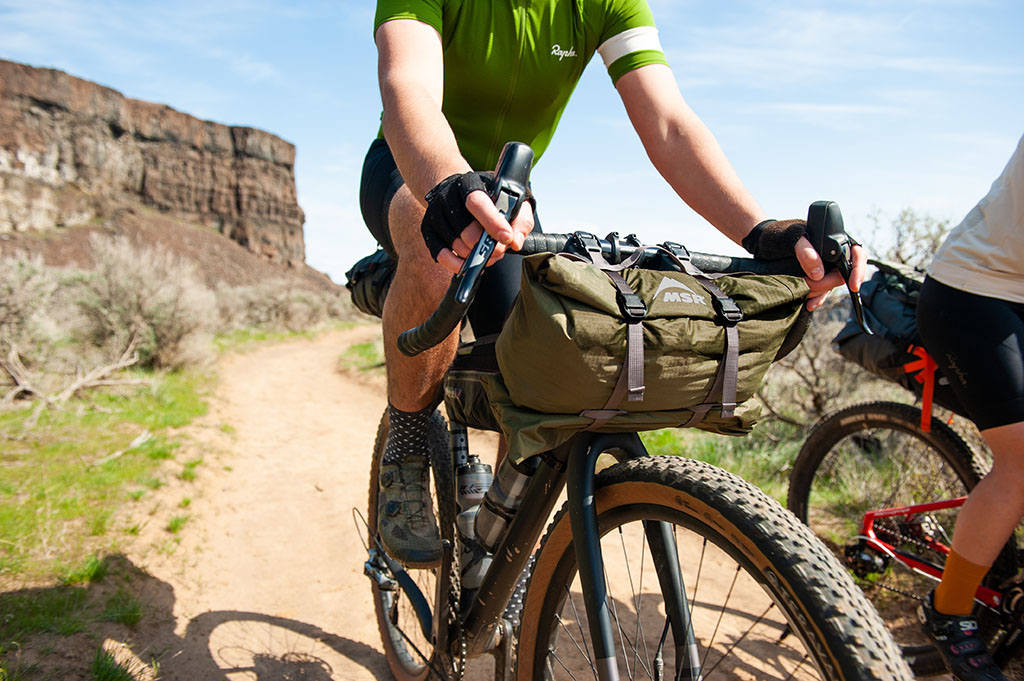
Bikepacking Tents
The ideal tents for your next road or gravel adventure, we’ve tweaked our most legendary tent design to be more bike-friendly, without any compromise in performance or livability.
| Bikepacking Tent | Min Weight | Floor Area + Vestibule(s) | Door/Vestibules | Sleeps | Best Uses/Key Features |
|---|---|---|---|---|---|
| Hubba Hubba™ Bikepack 1 | 2 lb 1-oz. (.93kg) |
18 + 9 sq. ft
(1.67 + .82 sq. m) |
1/1 | 1 | A legendary design, evolved to pair perfectly with road and gravel tours. |
| Hubba Hubba™ Bikepack 2 | 3 lb 1-oz. (1.40kg) |
29 + 117.5sq. ft
(2.7+ 1.63 sq. m) |
2/2 | 2 | A legendary design, evolved to pair perfectly with road and gravel tours. |
Hubba Hubba Bikepack 1 and 2
The Hubba Hubba Bikepack tents take one of the best-selling tent designs of all-time and tweak it to road-ready perfection. Each comes in a slick, handlebar-ready bag, complete with spacers, providing a smart and simple packing solution. If you’re already in love with your packing system, each tent is also designed with smaller pole sections to fit easily in panniers, frame bags, and other common bike-sized bags. In addition to all of the legendary features of the Hubba Hubba-series tents, like big interior spaces, freestanding design, sturdy geometry and decades of storm-proven protection, the Bikepacking variety also features a muted rainfly for stealthy camping not far off the gravel when the pickin’s are slim.
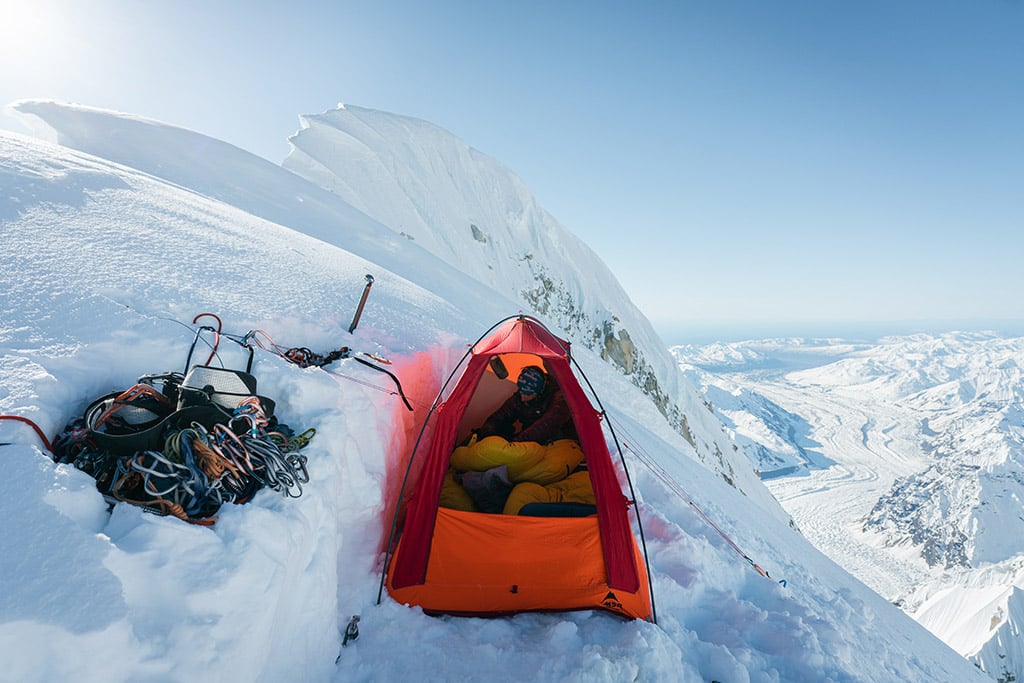
MSR All-Season Tents
MSR All-Season TentsAll-season tents (a.k.a. 4-season tents) are our strongest backcountry tents, built to handle the stress of winter snow loads and high alpine winds, yet light enough to carry to the most remote places on earth. Within this category, you’ll find burly MSR tents for mountaineering in any season, as well as lighter options for winter ski touring and snowshoeing excursions. Stronger fabrics, reinforced stitching, virtually indestructible Easton® Syclone™ poles, added room for winter gear and our finest waterproof coatings combine to make these tents you can count when you need them most.
| All-Season Tent | Min Weight | Floor Area + Vestibule(s) | Door/Vestibules | Sleeps | Best Uses/Key Features |
|---|---|---|---|---|---|
| Front Range™ Shelter | 1 lb 10-oz. (.74kg) |
81 sq. ft
(7.52 sq. m) |
1/0 | 4 | Ultralight, floorless design for simple yet versatile all-season protection. |
| Remote™ 2 | 6 lb 11-oz. (3.02kg) |
33 + 22 sq. ft
(3.06 + 2.04 sq. m) |
2/2 | 2 | Our burliest, all-season protection for mountaineering and winter camping above treeline. |
| Remote™ 3 | 8 lb 2-oz. (3.69kg) |
46 + 22 sq. ft
(4.30 + 2.04 sq. m) |
2/2 | 3 | Our burliest, all-season protection for mountaineering and winter camping above treeline. |
| Access™ 1 | 3 lb (1.37kg) |
19 + 9 sq. ft
(1.76 + .23 sq. m) |
1 | 1 | Dependable, all-season strength with a focus on keeping it light for ski tours and snowshoeing at or below treeline. |
| Access™ 2 | 3 lb 10-oz. (1.64kg) |
29 + 17.5 sq. ft
(2.69 + 1.62 sq. m) |
2/2 | 2 | Dependable, all-season strength with a focus on keeping it light for ski tours and snowshoeing at or below treeline. |
| Access™ 3 | 4 lb 6-oz. (1.99kg) |
41 + 17.5 sq. ft
(3.8 + 1.62 sq. m) |
2/2 | 3 | Dependable, all-season strength with a focus on keeping it light for ski tours and snowshoeing at or below treeline. |
| Advance Pro™ 2 | 2 lb 14-oz. (1.30kg) |
24 sq. ft
(2.23 sq. m) |
1 Door | 2 | Single-wall construction–the ultimate, ultralight assault capsule for serious alpinism. |
| Pro™ Bivy | 10-oz. (0.28kg) |
NA
|
NA | 1 | All-weather solo shelter for any season or activity where absolute protection and minimalism are essential. |
| E-Bivy™ | 6-oz. (0.18kg) |
NA
|
NA | 1 | A truly minimalist shelter, also excellent as an emergency backup shelter due to its light weight. |
 Remote™ 2, 3
Remote™ 2, 3
When you need the best protection possible for a trip to Denali or winter climbs in the lower 48, the Remote tents deliver. Inside, there’s plenty of room and storage for the added gear involved in winter climbs and technical ascents, while a roomy vestibule and snow-skirted, vented rainfly fend off the elements. It’s all supported by virtually indestructible Easton® Syclone™ poles and, for added peace of mind, multiple reinforced guy points let you batten down the hatches for the biggest storms. Color-coded pole clips make set up fast, and reflective guy lines and guy points make it easier to find your way home after dark. Access™ 1, 2, 3
Access™ 1, 2, 3
The Access tents strike a critical balance between weather protection and lightweight packability for high-mileage ski tours, snowshoeing and weekend winter camping. While still plenty robust for high winds and snow loads, their intended use is ratcheted back slightly to camping in relatively protected areas at or below treeline. This focused design intention allowed us to shave some weight, keeping your pack lighter so you can enjoy turns with a full pack a bit more. Limited mesh in the tent canopy retains warmth inside and works with a vented fly to maintain excellent ventilation.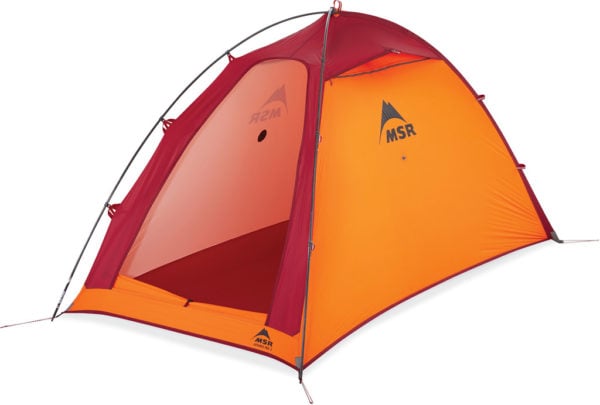 Advance Pro™ 2
Advance Pro™ 2
This is the ultimate assault capsule for ultralight alpine ascents. The 4-season Advance Pro 2 tent features an ultralight, single-wall construction and a small footprint for easier pitching on tiny ledges and chopped platforms. Nearly indestructible Easton® Syclone™ poles and reinforced guy-points inspire peace of mind when pitching in exposed areas and a unique pole sleeve allows the tent to be set up fast by one person—a critical advantage on technical terrain.
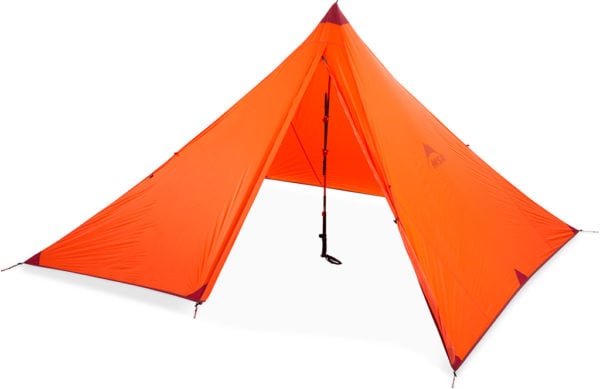 Front Range 4P & Front Range Bug/Floor Insert
Front Range 4P & Front Range Bug/Floor Insert
The Front Range tarp shelter lets parties of four move faster on giant alpine missions and ski traverses with ultralight, all-season protection from the elements. It can be used in any season as a basic shelter for up to four people or used as a gathering space/dining hall on guided trips and extended expeditions where the added elbow room is appreciated. The simple center-pole design is reinforced with our Xtreme Shield™ coating for dependable weather protection in any season. The optional Bug/Floor Insert features a waterproof bathtub floor and mesh canopy that adds the protection you want from wet spring conditions and mosquitoes.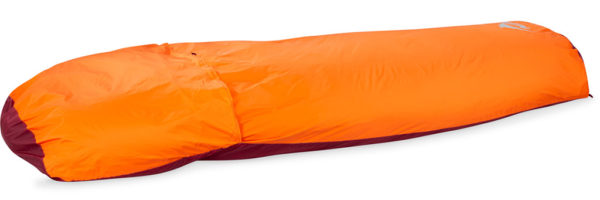 Pro Bivy
Pro Bivy
There’s just nothing lighter than a Pro Bivy when it comes to all-season protection. Sure, bivys get a bad wrap for their lack of comfort, but they more than make up for that in absolute protection in the worst storms with unbeatable weight and space savings. When those things are absolutely critical—like on serious technical alpine missions or even long winter ski traverses or snowshoes—a bivy is worthy of your consideration. They’re also great for “what if” situations when you plan to be back in a day, but you know you’re pushing your luck. Made of a waterproof and breathable top and a rugged, Xtreme Shield™-coated waterproof bottom for throwing down anywhere, the Pro Bivy will also boost the warmth rating of any sleeping bag in harsh winter conditions. E-Bivy
E-Bivy
The E-Bivy is the ultimate plan B. At just 6 oz., it’s a no-brainer to toss in your pack when getting darked on is a real possibility on long alpine climbs or even day hikes for added safety. While its ultralight silicone-coated top fabric is not waterproof, it will faithfully deliver emergency warmth and weather protection. It can also be carried on any overnight to boost sleeping bag warmth.
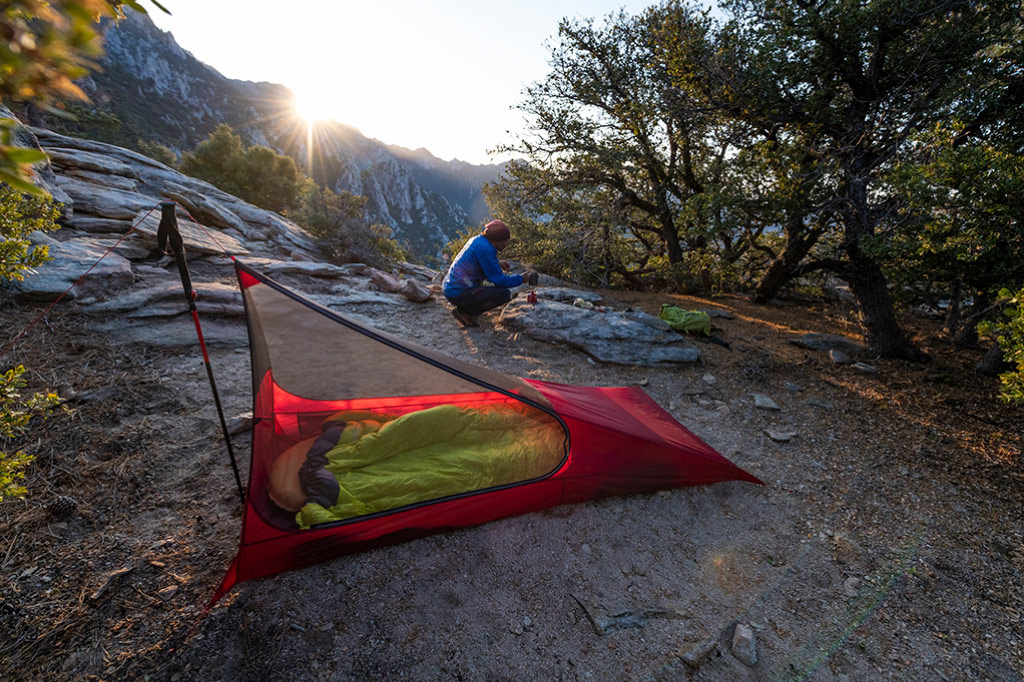
MSR Minimalist Tents & SheltersOur Minimalist shelters are for trips where shaving ounces reaches obsessive levels. Think thru-hiking long trails or anywhere that you’re willing to sacrifice some creature comforts to keep pack size and weight down so trail miles stay high.
| Minimalist Tent | Min Weight | Floor Area + Vestibule(s) | Door/Vestibules | Sleeps | Best Uses/Key Features |
|---|---|---|---|---|---|
| Thru-Hiker Mesh House 1 | 10-oz. (0.28kg) |
20 sq. ft
(1.68 sq. m) |
1 | 1 | A truly minimalist shelter for bug protection. |
| Thru-Hiker Mesh House 2 | 14-oz. (0.41kg) |
30 sq. ft
(2.78 sq. m) |
1 | 2 | A truly minimalist shelter for bug protection. |
| Thru-Hiker Mesh House 3 | 1 lb (0.46kg) |
37 sq. ft
(3.43 sq. m) |
1 | 3 | A truly minimalist shelter for bug protection. |
| Thru-Hiker 70 | 12-oz. (0.38kg) |
70 sq. ft
(6.50 sq. m) |
NA | 2-3 | Ultralight tarp shelter. Combine with Thu-Hiker Mesh House for added protection. |
| Thru-Hiker 100 | 1 lb 1-oz. (0.49kg) |
100 sq. ft
(9.29 sq. m) |
NA | 2-3 | Ultralight tarp shelter. Combine with Thu-Hiker Mesh House for added protection. |
| Rendezvous™ 120 Wing | 3 lb 4-oz. (1.47kg) |
120 sq. ft
(10 sq. m) |
NA | 2-4 | Ultralight, large tarp protection for group coverage. |
| Rendezvous™ 200 Wing | 6 lb (2.77kg) |
200 sq. ft
(18.58 sq. m) |
NA | 6-12 | Ultralight, large tarp protection for group coverage. |
 Thru-Hiker Mesh House 1, 2, 3
Thru-Hiker Mesh House 1, 2, 3
Weighing as little as 10 oz, the Thru-Hiker Mesh Houses add essential bug protection for thru-hikers committed to using ultralight tarps for weather protection. Aside from the zipper, there’s zero hardware and they pitch with trekking poles to save even more weight. A bathtub floor keeps out mud and moisture and there’s enough internal space for comfortable living months at a time. Of course, the sun doesn’t shine every day, so pair a Thu-Hiker Mesh House with a Thru-Hiker Wing for minimalist, overhead protection when the skies don’t cooperate with your plans. 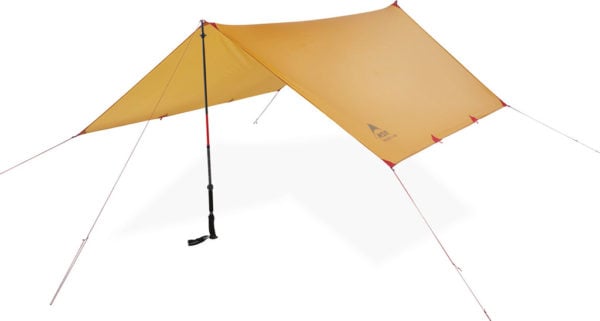 Thru-Hiker Wing 70/100Protection for four at just over a pound? That’s what the Thru-Hiker Wings provide, packing ultra-small and ultralight for anyone committed to small packs, low weight and big trail days. Gossamer 20D nylon features our Xtreme Shield™ coating for maximum weatherproof reliability and they pitch with just a pair of trekking poles to keep things simple. Alternatively, pair them with a Thru-Hiker Mesh House 2 or 3 to create minimalist protection from rain, wind and bugs on the AT, PCT, CDT or whatever “T” you’re dreaming of.
Thru-Hiker Wing 70/100Protection for four at just over a pound? That’s what the Thru-Hiker Wings provide, packing ultra-small and ultralight for anyone committed to small packs, low weight and big trail days. Gossamer 20D nylon features our Xtreme Shield™ coating for maximum weatherproof reliability and they pitch with just a pair of trekking poles to keep things simple. Alternatively, pair them with a Thru-Hiker Mesh House 2 or 3 to create minimalist protection from rain, wind and bugs on the AT, PCT, CDT or whatever “T” you’re dreaming of.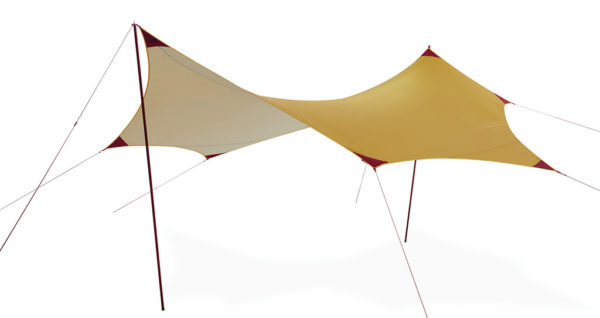
Rendezvous Sunshield 120 & 200
The most asked question when our sun and weather-shielding Rendezvous Sunshield tarps are deployed is “Where’d you get that?” Their relatively giant size seems anything but minimalist, but they become essential basecamp tools for anyone that has one, serving up protection that can be viewed as minimalist or decadent. It just depends on how you use them.At just 3 lb 4 oz, the 120 makes a minimalist, backcountry-friendly refuge for up to four. Alternately, bring it along to simply provide a covered cooking area or sunshade on a short backpack—you’ll be getting decadent vibes all day long.The 200 easily covers a full-size picnic table with its 200 square feet of protection and is minimalist only relative to the enormous coverage it provides. At 6 lb, its lightweight fabric packs efficiently in a car, van or boat and is just what you need to protect yourself and a small army of friends from sun and rain, anywhere you like.Each features a polyurethane and silicone-coated nylon fabric for reliable protection and comes with two poles for setup. You can even add more poles to increase the standing-height area or create any number of configurations that suit your needs. And a pro tip: follow the simple directions for a much faster set-up.
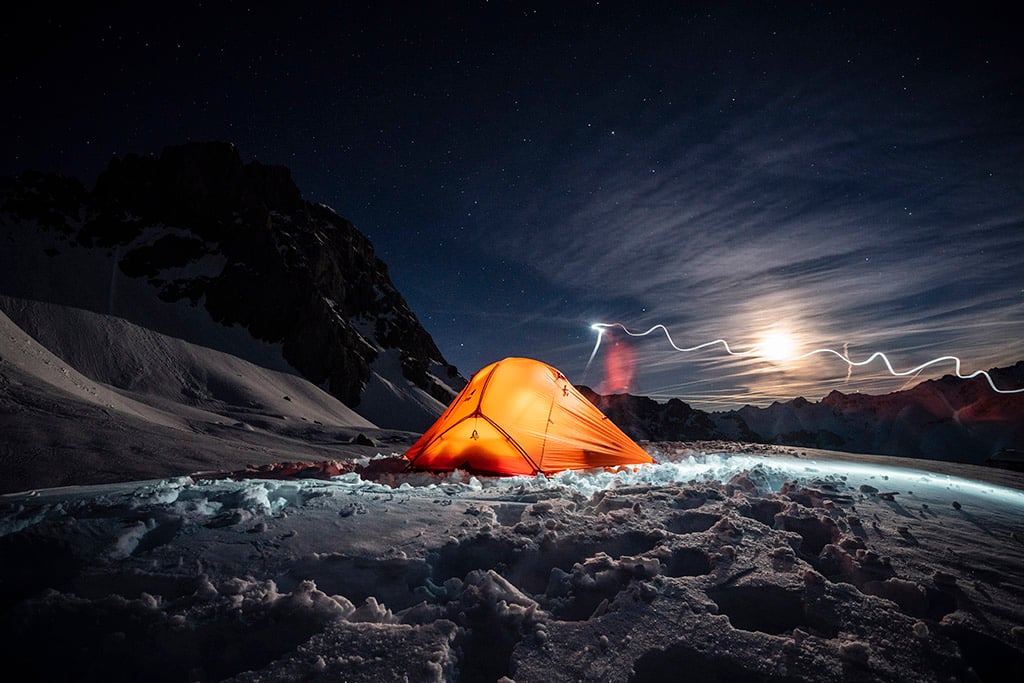
More About MSR Tents
MSR tents are the stuff of legend. Back in 1973, residents of Seattle were treated to MSR founder Larry Penberthy’s homemade wind tunnel—a tent strapped to the back of a pick-up truck—hurtling at 60 m.p.h. down the highway. That same kind of scrappy, “real world” testing and design are the way MSR tents have always been built, and it continues today.Our in-depth understanding of fabrics, waterproof coatings, structural engineering, and, most importantly, how and where people use MSR tents, allows us to design the best tents possible for a multitude of purposes. Central to that is our philosophy of simple, clean designs that last—one of the cornerstones of MSR tent design. From the legendary, game-changing Hubba Hubba™ tents and rugged all-season designs to our minimalist Thru-Hiker™ shelters and car camping Habitude™ tents, every MSR tent design is informed by our unwavering commitment to lasting performance in real-world conditions.
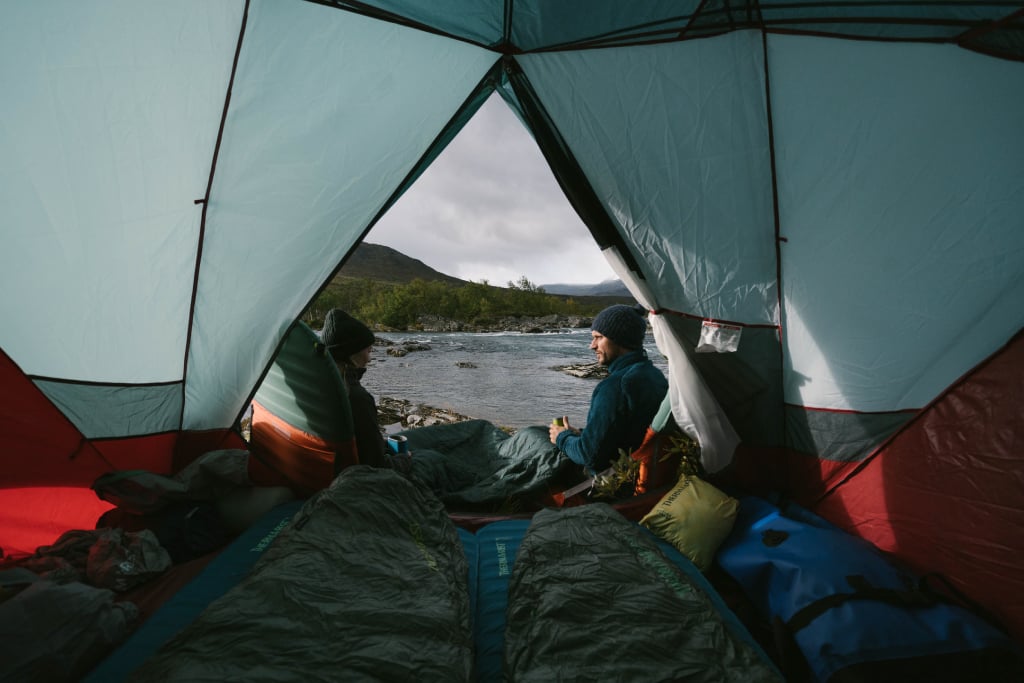
How To Find the Right Tent for You
Choosing a tent can seem daunting, but it really is simple math. A quick series of questions will get you started down the right path. Ultimately, you might end up needing two or more tents for a variety of trips, but we also design a number of MSR tents that can handle a wide range of trips. Ultimately, it all boils down to weight, durability, space and features. They’re all interconnected but taken individually, it’s a great place to start your search.
Trip Type and Destination
When it comes to finding the right tent, the top of the funnel is always identifying the type of trips you do most of the time. Likely, you’ll fit easily into one of our established categories. From vehicle-supported camping trips to winter mountaineering, each trip demands a different set of design priorities, so define your style of travel first. Some MSR tents, like our all-season and minimalist tents, are highly specialized and have a narrower window of application. Others, like our backpacking tents, have a much broader application and can span multiple types of trips. You might really appreciate having a few specialized MSR tents in your quiver, but if you’re taking a couple of backpacks a year and occasionally traveling for them, focus on one that is more of a jack-of-all-trades.
Number of People
Obvious, right? We take pride in offering a great amount of livability in all MSR tents; if you get a two-person tent, you can definitely fit two people in it. However, some people opt for an ultralight three-person tent for two or roll solo in a two-person tent. Just know those options exist.
Season
Will you need a 3- or 4-season tent? While it may be obvious that a 4-season tent for winter mountaineering is built to handle heavy snow loads and extreme winds, it might be less intuitive that the ideal summer backpacking tent for someone in Arizona will look a bit different than the one for someone in Alaska or even Maine. As a rule, a tent with more mesh will keep you more comfortable in warm weather than one with less mesh, and some ultralight designs are optimized exclusively for summer weather.
Tent Features
Two doors or one? How big is the vestibule? Are there one or two vestibules? How easy is set up? Is it freestanding? These, along with your need for internal storage, guy points, available accessories and more should be considered in finding the right tent.
The Triangle of Weight, Durability & Space
All roads on the path to the right tent lead here. In fact, it’s so hard to discuss one without the other that we’re just going to discuss them as one. Essentially, the more durability and space you want, the more your tent will weigh. Higher denier fabrics, tougher waterproof coatings and burlier components and construction techniques all result in a tent that is much tougher—and heavier. And of course, more space equals more fabric which, in turn, equals more weight. Conversely, if you want the lightest backpacking tent possible, be prepared to sacrifice some space. You’ll also get the most out of it by not expecting it to stand up to the same abuse as a tent that weighs two pounds more. Understanding this triangle is essential to not only finding the right tent but having realistic expectations of it in the field.
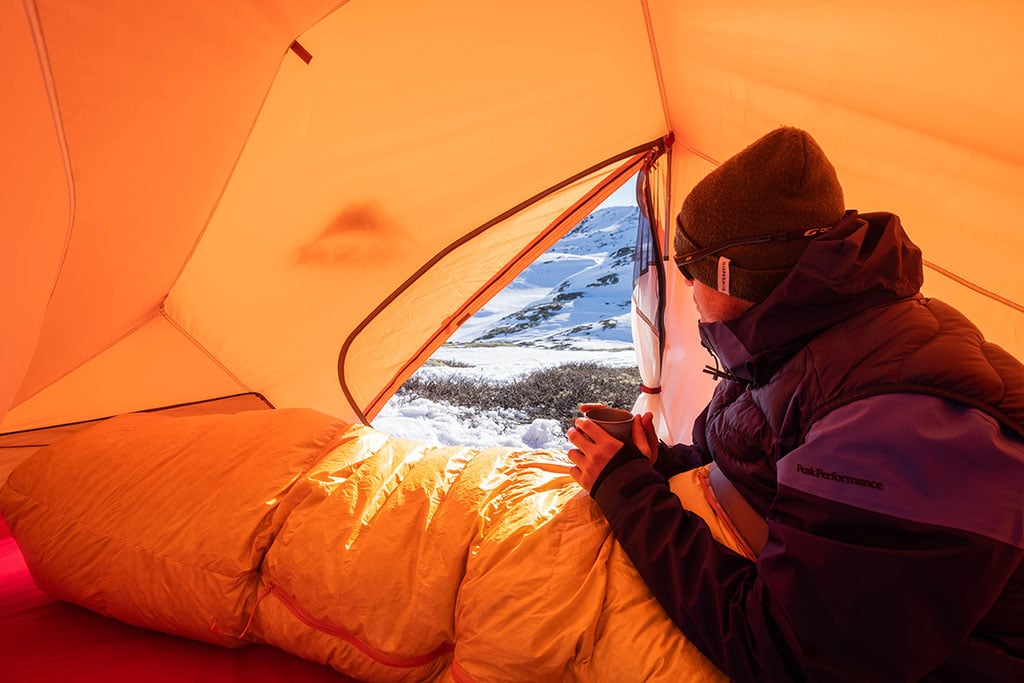
Staying Warm & Dry in a Tent
Aside from a cool alpine lake on a hot summer day, water has always been a bit of an enemy when it comes to staying comfortable in the backcountry. This is certainly true when it comes to the inside of your tent. Condensation, wet gear and even the vapor we exhale through the night can dramatically affect your tent environment. Fortunately, there are some key rules to follow that will keep moisture at bay and your comfort level high.
Ventilation
Likely the most important weapon of all in the fight against moisture is ventilation. The bottom line: keep as much of your tent open as possible, and only close it up completely when weather demands it. The more airflow there is in and around your tent, the drier and more comfortable you’ll be. Even mesh stops a surprising amount of airflow, so if bugs are not an issue, always leave at least the tops of your doors unzipped a little to help let out the moisture we generate just by breathing. Also be aware that some tents need more ventilation than others, like single-wall tents and tents with more fabric in the tent canopies.
Keep Water Out
Another key way to sleep dry and comfortably in a tent is to keep water out. Make sure your fly is in good shape before each trip. Check seams to be sure the seam tape is in good shape, or that you have sealed untaped seams if needed. Also, keep wet gear out of your tent; that’s what vestibules are for. While bringing in a few things to dry them out may be mandatory in some situations, know that the water in those socks is going to end up in your tent, so ventilation becomes even more critical if you do.
Pitch It Good
In most conditions, the rainfly will be where a lot of your moisture ends up, but on the wrong side—the inside. This is just the place where the warm air inside the tent meets the outside cold and condensation happens. The best solution here is to pitch your tent taught. We’ve built every tent to carry this moisture down along the fabric to the ground, with minimal opportunities to drip inside. However, a sloppy pitch job will sag and provide opportunities for this nemesis to invade. And finally, pitch on dry ground, out of the way of storm drainage whenever possible.
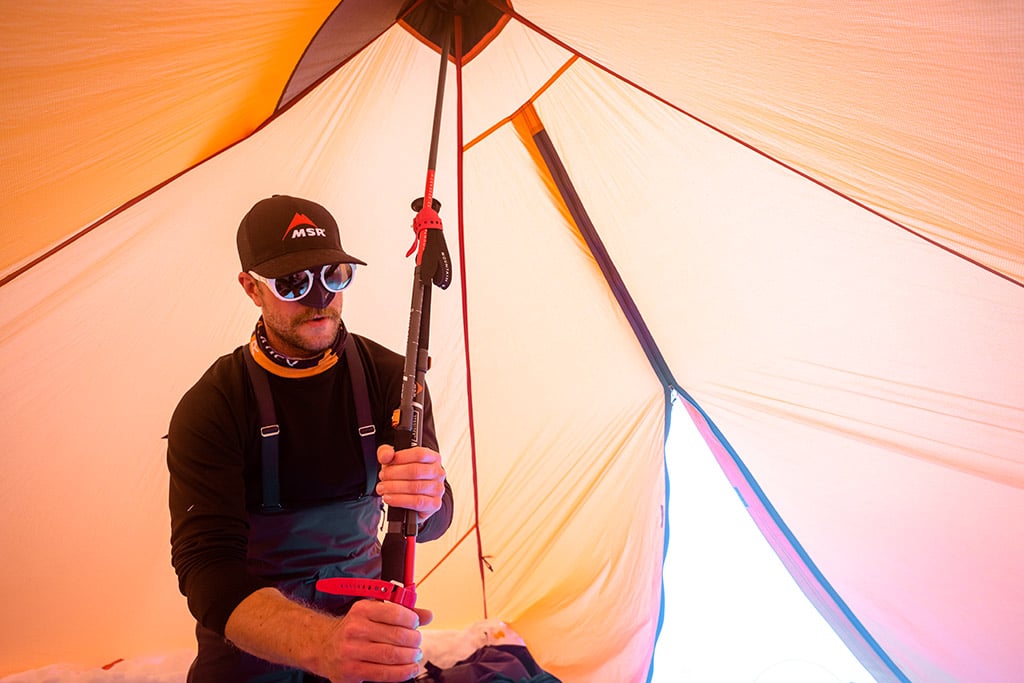
How to Pack Your Tent
There are generally two schools of thought on how to pack your tent properly and, in reality, there’s likely not a shred of hard science to support either of them. With that said, here are two ways that work. Are you a Roller or a Stuffer?
The Roller
The Roller likes things orderly in their lives. Nice, clean and predictable. They’ll swear this is easiest on the zippers and fabric and will make your tent last longer.Fortunately, the tent roll is a universal trick that works for nearly every tent ever made. First, spread your tent body out and drape the fly over top, making sure all the fabric is spread evenly and within the bounds of the tent’s base. Then, simply fold in thirds, using the stuff sack as a guide to ensure the width of your final fold matches. Then just place your poles on one end and roll them tightly into the middle as you go for guaranteed fit into the included sack.
The Stuffer
The Stuffer is committed to minimalism and speed. They may also be slightly less organized than the Roller. They will swear that stuffing reduces the chances of repeated creasing in the same spots on your tent and thus your tent will last longer. They will also proudly remind you that it’s called a “stuff sack” for a reason.Most stuffers will simply take the tent sack, place the poles in first, then stuff away until it’s all inside. Minimalist stuffers will leave the stuff sack at home, making it easy to split the tent body, rainfly and poles/stakes out amongst the group. Each person then just uses the fabric parts of the tent as void fill in their backpacks, stuffing hard to make a solid, good-carrying backpack.
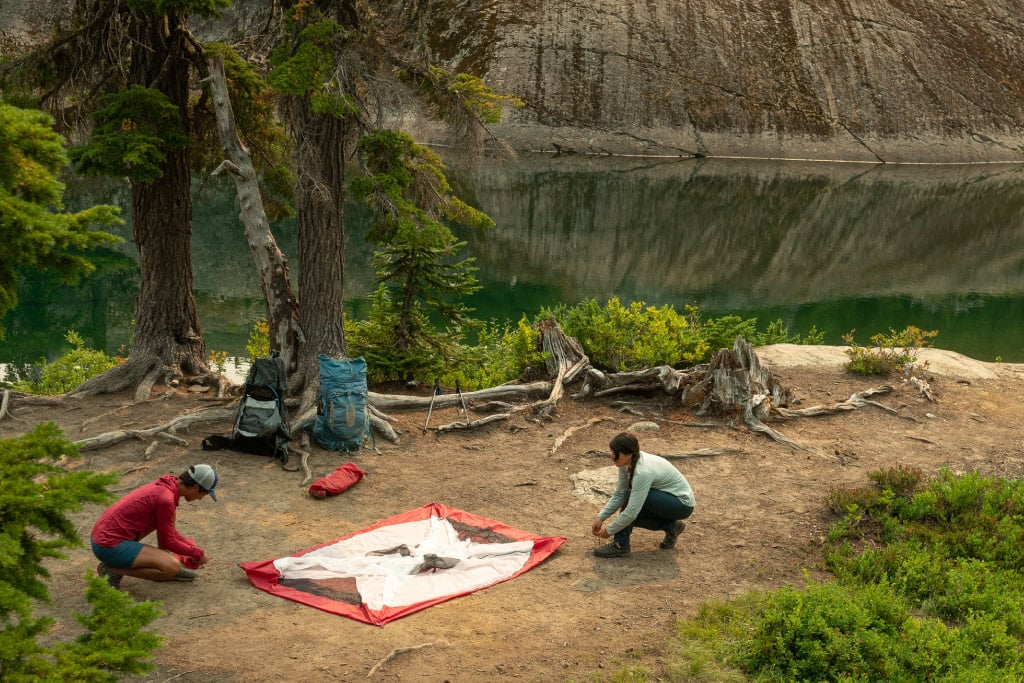
Tent Care
Whatever tent you choose, caring for it properly will pay off by adding years to its usable lifespan. Here are some key tips for doing it right.
Pack It Dry
Always dry your tent completely before you pack it away. Always. This is critical for long-term storage but will even help between camps on a backpack, or even on a long drive home in a hot roof box. Try to flip your tent over and drape it in a sunny spot to dry any condensation that has formed underneath (if you didn’t use a footprint) before completely breaking camp for the day. If it rains on you for your whole trip, don’t fret. Just be sure to dry it as soon as you get home. The drier your tent is when it is packed, the longer it will last. Period.
Keep It Clean
Fine dirt, sand and rocks are abrasive and can wreak havoc on tent fabrics and zippers, especially when stuffing and packing. Always dump dirt and debris out of your tent before you pack it up, and be sure to check the corners for accumulated dirt and internal pockets for potentially sharp trash or gear. Also, be sure that the exterior isn’t picking up a lot of dirt as you pack it or roll it, particularly if the bottom is still damp. Occasionally, mud, sap, sunscreen and other contaminants can soil your tent, requiring a thorough cleaning. As always, plan that for when you can leave your tent outside to dry or hang it on a line, moving it frequently to prevent moisture from lingering too long in fabric folds.
Tent Repair
Ultimately, you might compromise your tent with a puncture or need a zipper replaced. We strongly encourage you to seek out professional repairs for major work like replacing a zipper, but many basic fabric repairs are surprisingly easy done right at home. Keeping your tent going as long as possible will keep it out of the landfill and reduce our impact on the planet.
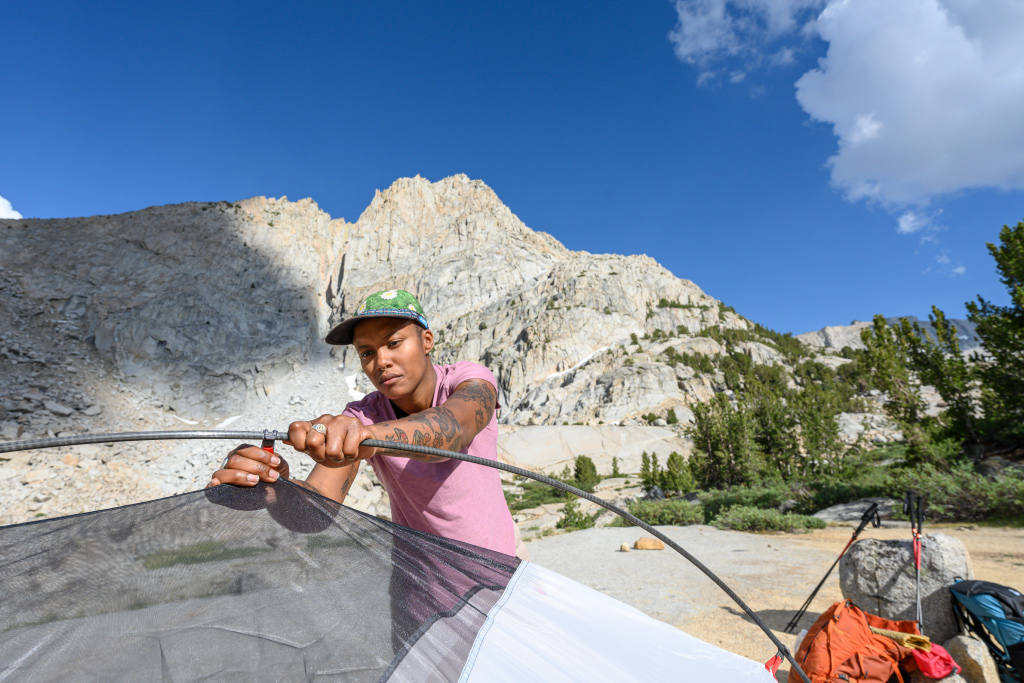
MSR Tent Accessories
We carry a full complement of tent accessories to boost the performance and extend the lifespan of your tent. First and foremost is the footprint. Used between the tent floor and ground, a footprint is essential to making your tent last. Other things like tent stakes for a variety of conditions, zipper pulls, pole repair sleeves, stake hammers, reflective guy lines and more can make camping easier and help you get the best performance from your tent. Hopefully, this Tent Guide has given you a solid overview of your options when it comes to choosing an MSR tent. If all else fails, drop us a line or swing by your local gear shop to get the answers you need. Good luck and happy camping!
Related Posts:
- Designing MSR Tents — What We Stand For
- Best 4-Season and Mountaineering Tents by MSR
- Our Best Family Camping Tents
Updated. Originally Published July 13, 2021.


